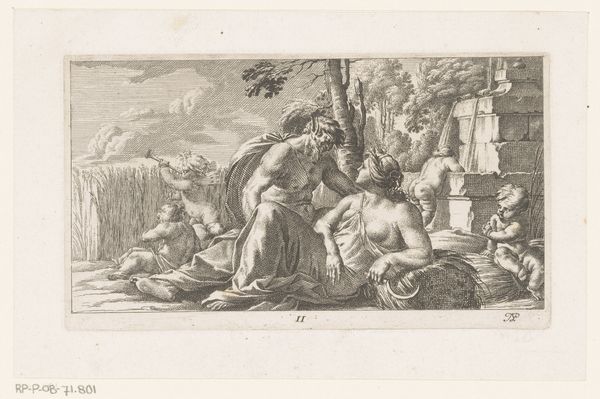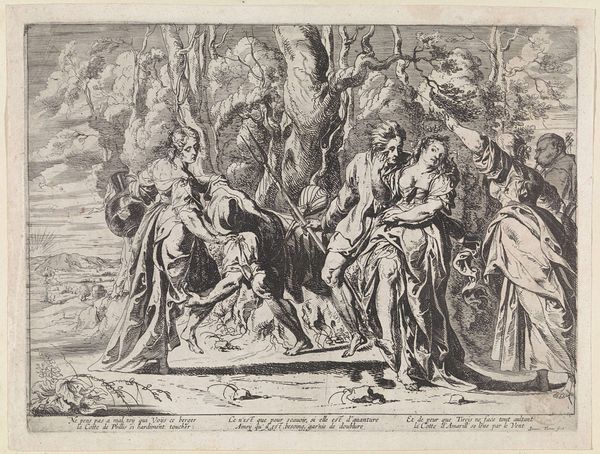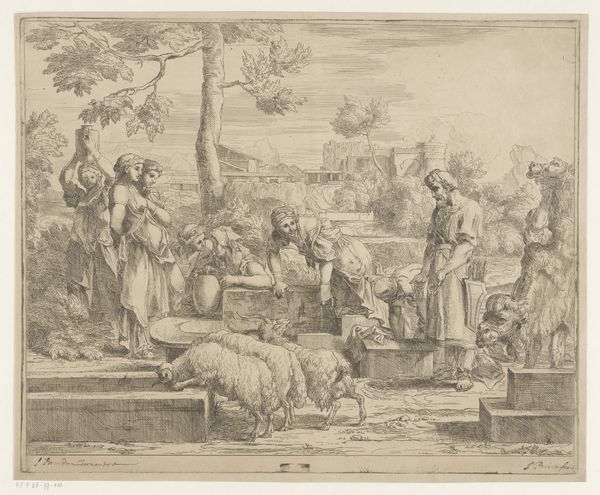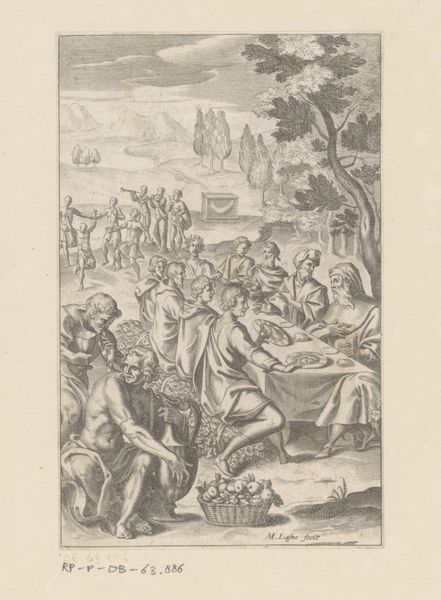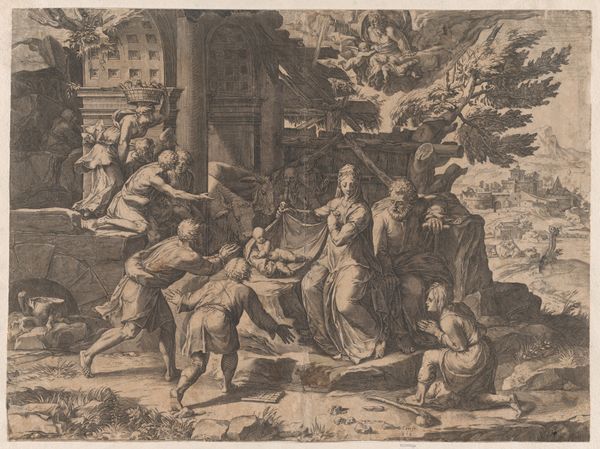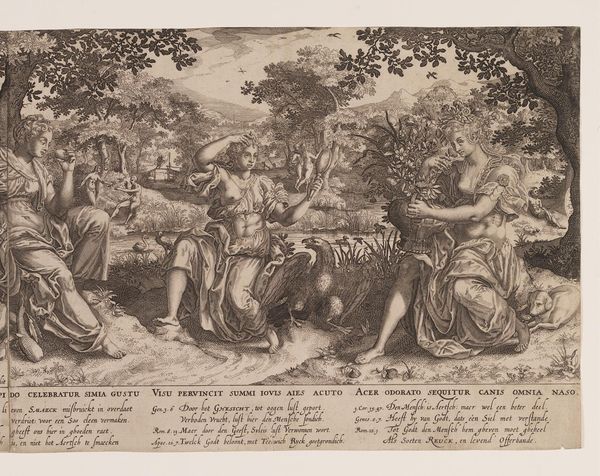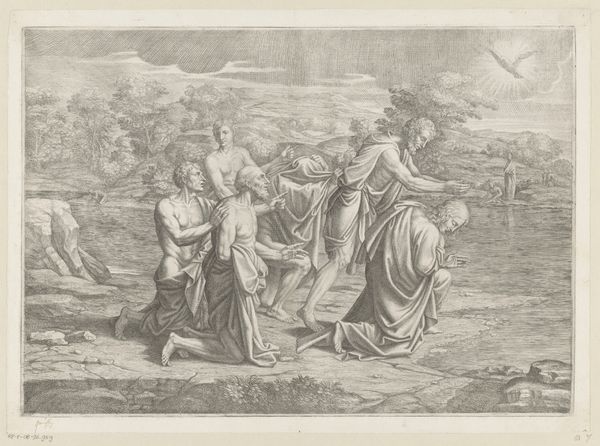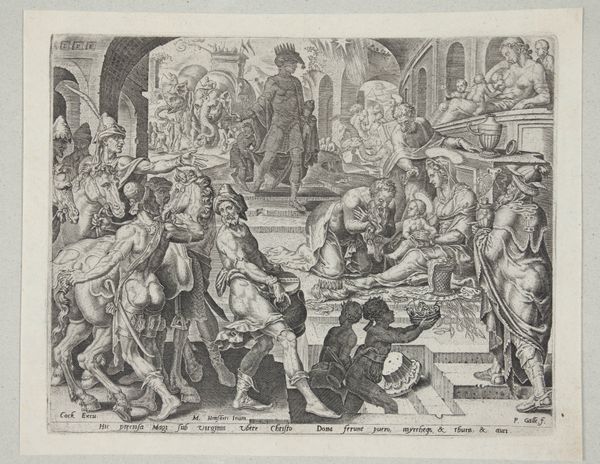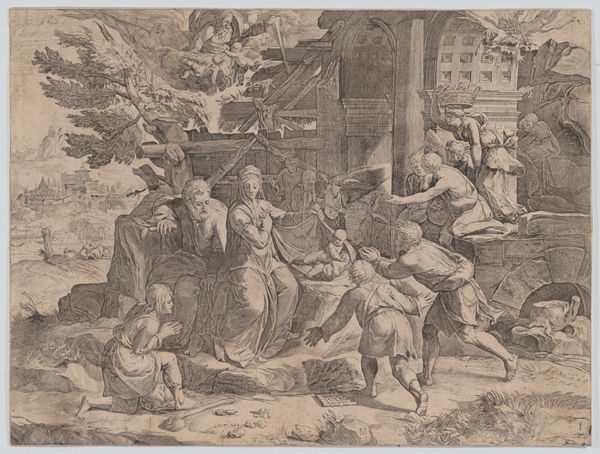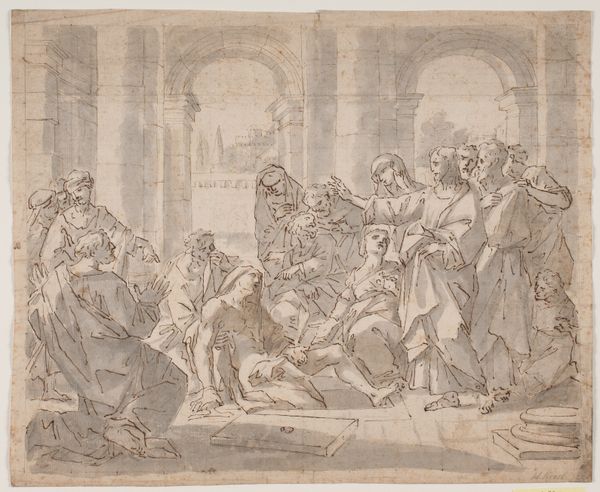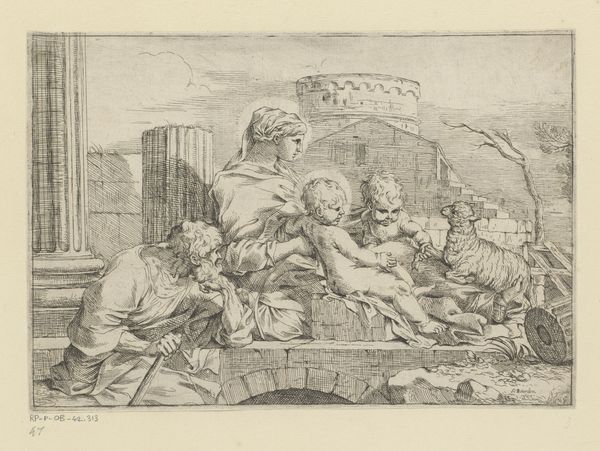
print, engraving
#
narrative-art
#
baroque
# print
#
landscape
#
figuration
#
history-painting
#
italian-renaissance
#
engraving
#
christ
Dimensions: height 292 mm, width 415 mm
Copyright: Rijks Museum: Open Domain
Editor: So, this is Annibale Carracci's "Christ and the Samaritan Woman," an engraving from around 1610. I'm immediately struck by the almost casual arrangement of figures in what is clearly meant to be a significant, biblical encounter. What do you see in this print? Curator: This piece speaks volumes about the evolving role of women and religious interpretation in the 17th century. We're seeing a shift in how artists chose to portray marginalized voices within the gospel. Carracci places a woman at the very center of a theological discourse, something quite radical given the deeply patriarchal structure of the church and society at that time. The act of Christ engaging with her challenges those structures directly. What does it tell us about power dynamics in the landscape? Editor: That's a great point. I hadn't thought about the setting as being reflective of power. Now that you mention it, Christ is seated and somewhat elevated, but the woman occupies a central position in the foreground. I also noticed the other figures around the well almost seem to ignore the exchange between the two. Is there a reading there? Curator: Absolutely. Their indifference highlights the social norms of the time—that is, the tendency to invalidate a woman’s voice. But the very presence of this image, circulated as a print, challenges that dismissal. Can this engraving encourage reflection of current intersectional conversations, equality, and recognition? Editor: It makes me consider how far we’ve come, but also how relevant the struggle for women’s voices continues to be. Curator: Precisely. It demonstrates the power of art to both reflect and challenge its social context. Hopefully visitors are able to reflect on current dialogues, in seeing this engraving. Editor: I’ll certainly remember that as I look at art from this period from now on.
Comments
No comments
Be the first to comment and join the conversation on the ultimate creative platform.

